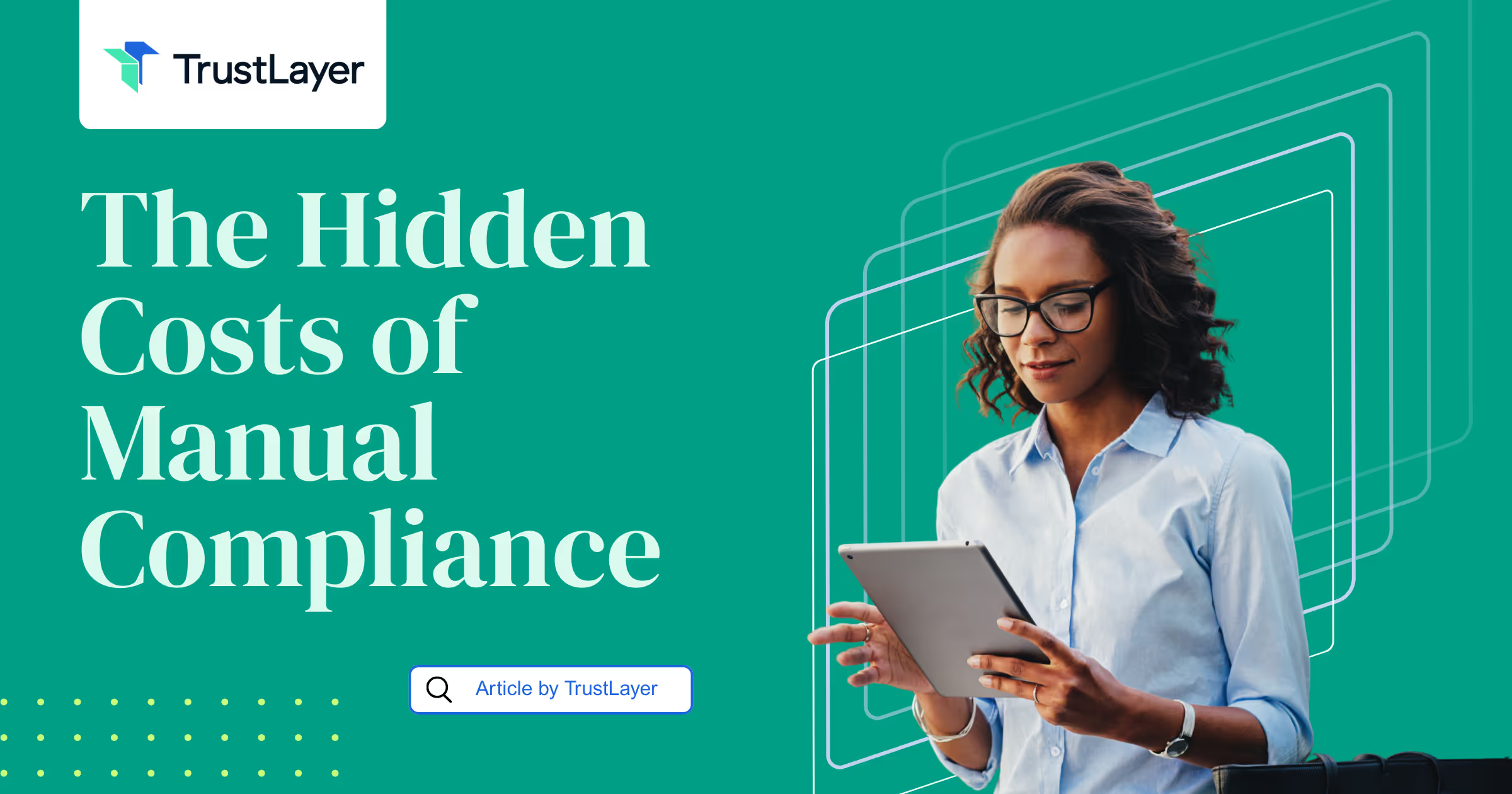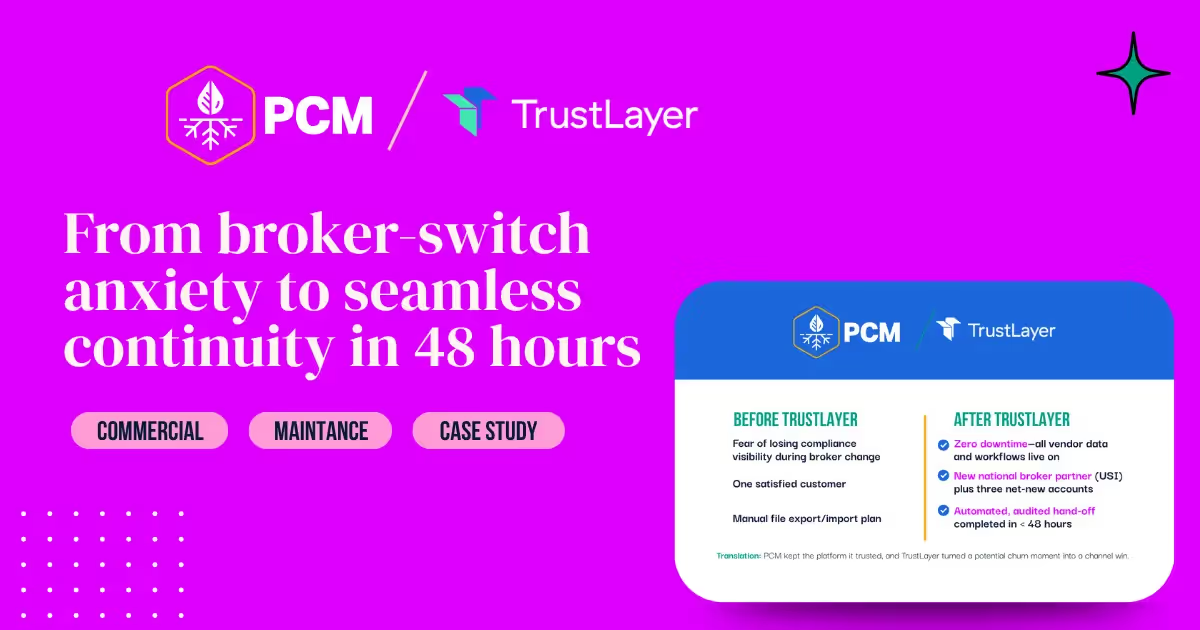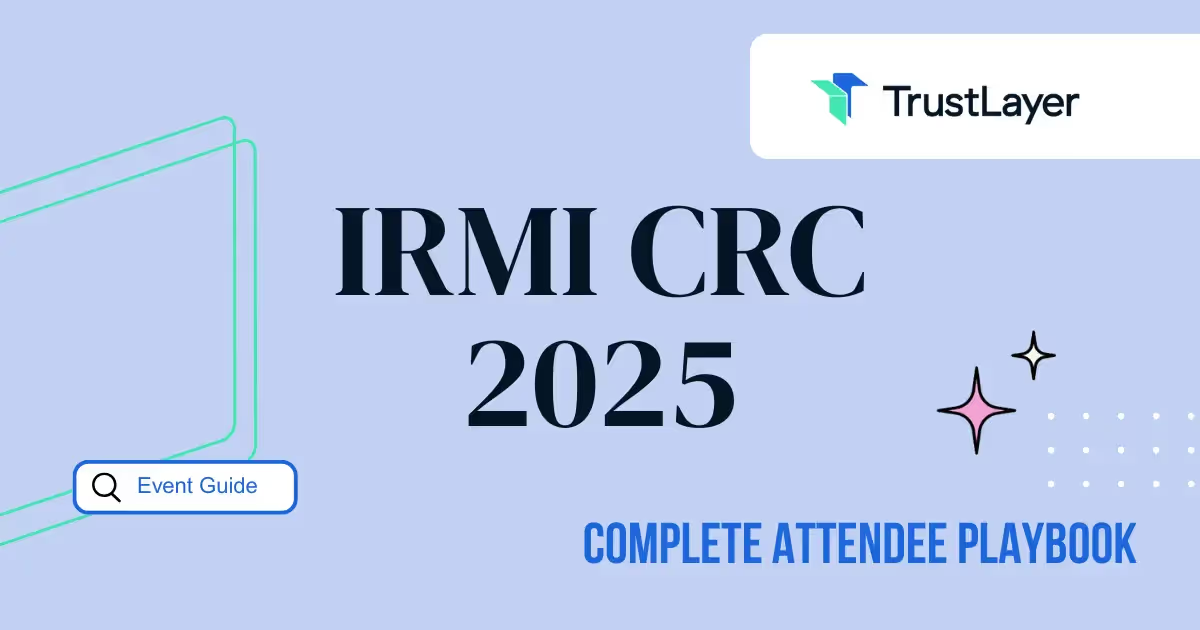The Future of Insurance Documentation: COI Tracking Solutions Trends
In the fast-paced world of insurance, staying up to date with the latest trends and technological advancements is crucial. One area that has taken center stage in recent years is Certificate of Insurance (COI) tracking. As insurance documentation becomes increasingly complex, insurance professionals are turning to innovative COI tracking solutions to streamline their processes and mitigate risks. In this article, we will explore the various facets of COI tracking solutions and delve into the emerging trends shaping the future of insurance documentation.
Understanding COI Tracking in Insurance
Before we dive into the trends, it's essential to grasp the role of COI in insurance and why it's crucial to track and manage it effectively. A COI is a document issued by an insurance company that provides evidence of insurance coverage to a third party. It serves as proof that the insured party has the necessary insurance policies in place. COIs are widely used in industries such as construction, real estate, and contracting, where multiple parties are involved in a project.
When it comes to insurance, risk management is of utmost importance. Businesses need to ensure that all parties involved in a project are adequately protected. This is where COIs come into play. By requiring contractors and vendors to provide valid COIs, businesses can transfer certain risks to insurance providers. This helps protect against potential liability and financial loss.
The Role of COI in Insurance
COIs play a vital role in ensuring that all parties involved in a project are adequately protected. By requiring contractors and vendors to provide valid COIs, businesses can transfer certain risks to insurance providers. This helps protect against potential liability and financial loss.
Imagine a construction project where multiple contractors and subcontractors are involved. Each party brings their own set of skills and expertise to the table, but they also bring potential risks. Without proper insurance coverage, any accidents or damages that occur during the project could lead to costly legal battles and financial burdens. COIs act as a safety net, providing assurance that all parties have the necessary insurance coverage to handle any unforeseen circumstances.
Key Features of COI Tracking Solutions
COI tracking solutions offer a range of features designed to simplify the management of COIs. These solutions provide centralized platforms where insurance professionals can store and organize their COIs, automate tracking processes, and ensure compliance. Key features include:
- Automated COI request and tracking: With COI tracking solutions, insurance professionals can streamline the process of requesting and tracking COIs. Instead of manually reaching out to contractors and vendors for their COIs, the system can automatically send requests and keep track of the received documents.
- Real-time monitoring and expiration alerts: COI tracking solutions provide real-time monitoring of COIs, ensuring that insurance coverage remains up to date. The system can send expiration alerts to both the insured party and the insurance professional, allowing them to take necessary actions to renew or update the coverage.
- Secure document storage and sharing: Storing and sharing COIs can be a cumbersome task. COI tracking solutions offer secure document storage, allowing insurance professionals to easily access and share COIs with relevant parties. This eliminates the need for physical paperwork and reduces the risk of misplaced or lost documents.
By utilizing COI tracking solutions, insurance professionals can streamline their processes, reduce administrative burdens, and ensure that all parties involved in a project are adequately protected. These solutions bring efficiency and peace of mind to the insurance industry, allowing for smoother transactions and effective risk management.
Emerging Trends in COI Tracking
As technology continues to advance, the landscape of COI tracking is evolving rapidly. Let's examine two of the most notable trends in this field.
Automation in COI Tracking
Gone are the days of manually tracking COIs on spreadsheets and sifting through piles of paperwork. Automation has revolutionized COI tracking, eliminating manual errors and saving valuable time. Automation tools can seamlessly retrieve, validate, and store COIs, ensuring accuracy and efficiency.
With automation, insurance professionals can now effortlessly manage large volumes of COIs from various vendors and contractors. These tools can automatically extract relevant information, such as policy numbers, coverage dates, and limits, from digital documents, eliminating the need for manual data entry. This not only reduces the risk of human error but also enhances data accuracy.
Furthermore, automated COI tracking systems can send out timely reminders to vendors and contractors, ensuring that their COIs are up to date. This proactive approach helps mitigate potential risks and ensures compliance with insurance requirements.
Additionally, automation enables seamless integration with other systems, such as vendor management platforms and enterprise resource planning (ERP) software. This integration streamlines the COI tracking process by automatically updating vendor information and syncing COI data with other relevant systems, providing a comprehensive view of risk management across the organization.
Integration of AI and Machine Learning
The integration of Artificial Intelligence (AI) and Machine Learning (ML) technologies is another groundbreaking trend in COI tracking. These solutions can analyze vast amounts of data and identify patterns, enabling insurance professionals to identify high-risk vendors, detect potential compliance gaps, and make data-driven decisions.
AI-powered COI tracking systems can automatically classify and categorize COIs based on predefined criteria, such as policy type, coverage limits, and expiration dates. This categorization allows insurance professionals to quickly identify critical information and prioritize their review process.
Machine Learning algorithms can continuously learn from historical data and identify trends and anomalies in COI submissions. By analyzing patterns, these algorithms can flag potential compliance issues or fraudulent activities, providing early detection and reducing the risk of financial losses.
Moreover, AI and ML technologies can assist in predictive analytics, helping insurance professionals forecast potential risks and develop proactive risk mitigation strategies. By analyzing historical data and external factors, such as industry trends and regulatory changes, these systems can provide valuable insights to optimize insurance coverage and minimize potential liabilities.
Furthermore, the integration of AI and ML technologies with COI tracking systems enables intelligent data extraction. These systems can automatically extract relevant information from unstructured documents, such as certificates and endorsements, and populate the required fields in the COI tracking system. This eliminates the need for manual data entry and reduces processing time, improving overall efficiency.
In conclusion, automation and the integration of AI and Machine Learning technologies are revolutionizing COI tracking. These trends not only enhance accuracy and efficiency but also enable insurance professionals to make data-driven decisions, identify potential risks, and proactively manage compliance. As technology continues to advance, we can expect further innovations in COI tracking, shaping the future of risk management in the insurance industry.
The Impact of COI Tracking Solutions on Insurance Documentation
By leveraging COI tracking solutions, insurance professionals can unlock a myriad of benefits that significantly enhance their documentation processes.
Insurance documentation plays a crucial role in the industry, as it provides a record of policies, claims, and client information. However, managing and maintaining accurate documentation can be a time-consuming and error-prone task. This is where COI (Certificate of Insurance) tracking solutions come into play.
Enhancing Efficiency in Documentation
With automated COI tracking, insurance professionals can bid farewell to manual data entry and time-consuming paperwork. This streamlines their workflow, allowing them to focus on more critical tasks, such as policy analysis and client consultation.
Imagine a scenario where insurance professionals no longer have to spend hours manually inputting data from COIs into their systems. Instead, they can rely on COI tracking solutions that automatically extract and update the necessary information. This not only saves time but also reduces the chances of human errors that can occur during manual data entry.
Furthermore, COI tracking solutions provide a centralized platform where insurance professionals can access and manage all their COIs in one place. This eliminates the need to search through piles of paperwork or multiple systems, streamlining the process of retrieving and updating documentation.
According to industry statistics, companies that adopt COI tracking solutions witness a substantial reduction in administrative burdens and an improvement in overall process efficiency. This allows insurance professionals to allocate their time and resources more effectively, ultimately leading to better customer service and increased client satisfaction.
Reducing Errors and Risks
Manual COI tracking is prone to errors and oversights, leading to compliance risks and potential lawsuits. COI tracking solutions eliminate these risks by automating the verification process and sending real-time expiration alerts.
Imagine a scenario where an insurance professional overlooks an expired COI, resulting in a client's claim being denied. This can not only damage the client-insurer relationship but also expose the insurance company to legal liabilities. COI tracking solutions act as a safety net, ensuring that all COIs are up to date and compliant.
By automating the verification process, COI tracking solutions can instantly identify any discrepancies or missing information in the COIs. This allows insurance professionals to take immediate action, whether it's requesting updated COIs from clients or addressing any potential compliance issues.
Real-time expiration alerts provided by COI tracking solutions further enhance risk management. Insurance professionals no longer have to manually keep track of COI expiration dates or rely on clients to notify them. Instead, they receive automated alerts, ensuring that they are always aware of any upcoming expirations and can take proactive measures to secure updated COIs.
Overall, COI tracking solutions significantly reduce the chances of compliance breaches, legal battles, and reputational damage for insurance professionals. By leveraging these solutions, insurance companies can operate with greater confidence, knowing that their documentation is accurate, up to date, and in compliance with industry regulations.
Future Predictions for COI Tracking in Insurance
The future of COI tracking holds immense promise, fueled by advancements in technology and regulatory changes.
With the rapid evolution of technology, the potential for COI tracking solutions to become even more sophisticated is on the horizon. Artificial Intelligence (AI) and Machine Learning (ML) are expected to play a significant role in shaping the future of COI tracking. These advancements will enable insurance companies to streamline their processes and enhance their risk management strategies.
One potential technological advancement that could revolutionize COI tracking is the incorporation of natural language processing capabilities. This would allow COI tracking solutions to extract key information from complex insurance policies with ease. By analyzing the language and context of insurance policies, AI-powered systems could accurately identify and track certificates of insurance, reducing the risk of errors and improving overall efficiency.
Furthermore, the integration of blockchain technology has the potential to transform COI tracking in the insurance industry. Blockchain's decentralized and immutable nature can provide a secure and transparent platform for storing and verifying certificates of insurance. This would eliminate the need for manual verification processes, reduce fraud, and ensure the authenticity of COIs.
Potential Technological Advancements
As AI and ML continue to evolve, COI tracking solutions are likely to become even more sophisticated. For instance, they may incorporate natural language processing capabilities to extract key information from complex insurance policies. This would enable insurance professionals to efficiently manage and track COIs, saving time and resources.
Another potential technological advancement is the utilization of big data analytics. By analyzing vast amounts of data, insurance companies can gain valuable insights into risk patterns and trends. This information can be used to improve COI tracking processes and identify potential risks before they escalate. By leveraging big data analytics, insurers can make more informed decisions and enhance their risk management strategies.
Additionally, the emergence of Internet of Things (IoT) devices presents new opportunities for COI tracking in insurance. IoT devices, such as sensors and wearables, can collect real-time data on insured assets and provide continuous monitoring. This data can be integrated into COI tracking systems, allowing insurers to have up-to-date information on the status and condition of insured properties. This proactive approach to COI tracking can help prevent losses and mitigate risks.
The Role of Regulatory Changes
Changes in regulations and compliance requirements often drive innovation in the insurance industry. Insurance professionals must stay abreast of any regulatory updates to ensure their COI tracking solutions align with the latest industry standards.
Regulatory changes can influence the design and functionality of COI tracking systems. For example, new regulations may require insurers to track additional information or implement stricter verification processes. As a result, COI tracking solutions may need to be updated to comply with these regulatory requirements.
Moreover, regulatory changes can also impact the integration of emerging technologies in COI tracking. Insurance companies must navigate the regulatory landscape to ensure that their adoption of AI, ML, blockchain, and IoT aligns with legal and compliance frameworks. This requires a proactive approach to staying informed about regulatory changes and collaborating with regulators to ensure compliance.
Furthermore, regulatory changes can also drive collaboration and standardization within the insurance industry. As new regulations are introduced, industry stakeholders may come together to establish common standards and best practices for COI tracking. This collaboration can foster innovation, improve interoperability between different systems, and enhance the overall effectiveness of COI tracking solutions.
Challenges and Opportunities in Implementing COI Tracking Solutions
While COI tracking solutions offer numerous benefits, implementing them can present certain challenges. However, by addressing these obstacles head-on, organizations can unlock the full potential of COI tracking.
Overcoming Implementation Hurdles
One of the primary challenges organizations face when implementing COI tracking solutions is data integration. Ensuring seamless integration with existing systems and workflows is crucial for a successful implementation. Organizations must invest in solutions that offer robust integration capabilities to overcome this obstacle.
Seizing Opportunities for Improved Documentation
The implementation of COI tracking solutions presents an opportunity for insurance professionals to reevaluate their overall documentation processes. By leveraging technology, organizations can streamline their procedures, reduce costs, and provide enhanced services to their clients. TrustLayer, a leading COI tracking solution, has demonstrated remarkable results in helping insurance professionals improve their documentation and streamline their operations.
As the insurance industry continues to embrace digital transformation, COI tracking solutions will become indispensable. By staying ahead of the curve and adopting innovative technologies, insurance professionals can position themselves for success while improving efficiency, reducing risks, and providing optimal client experiences.
















